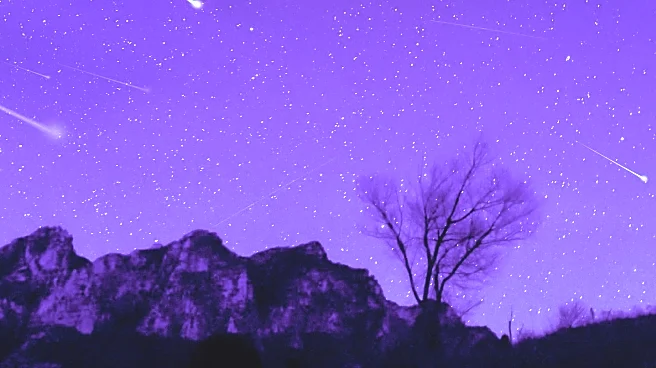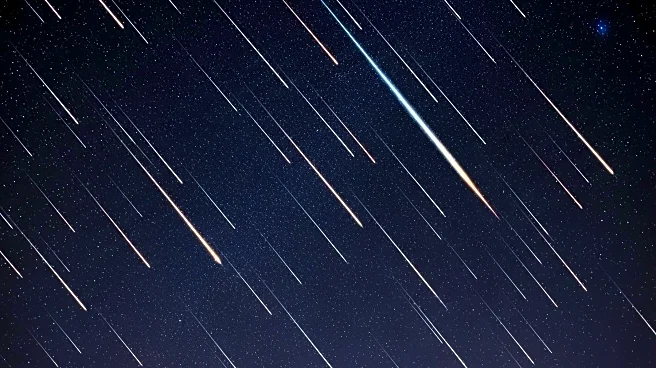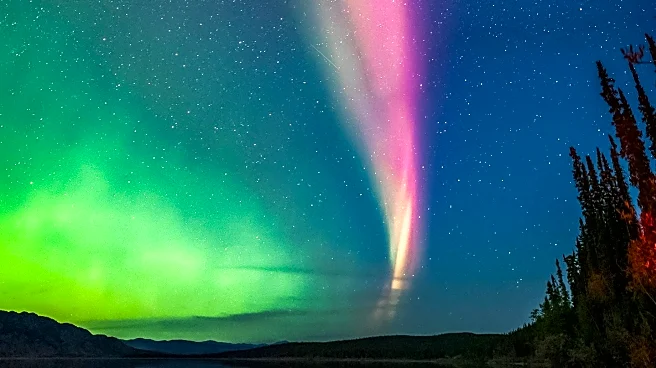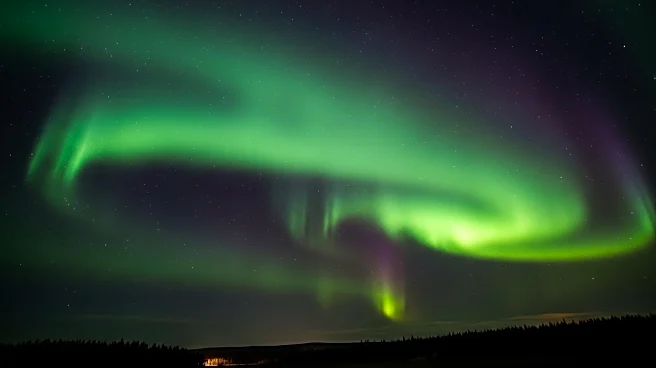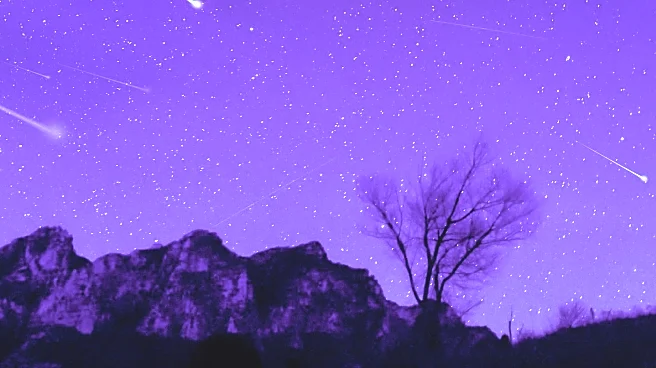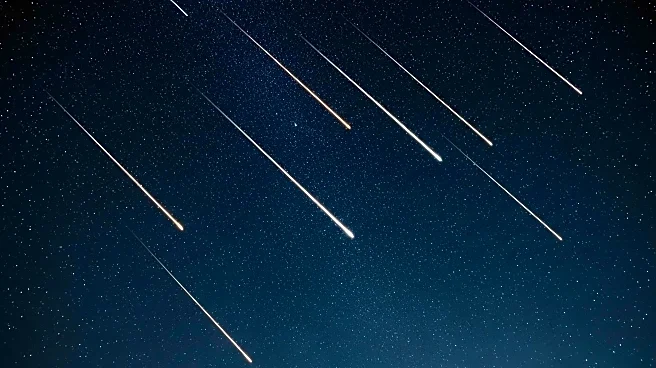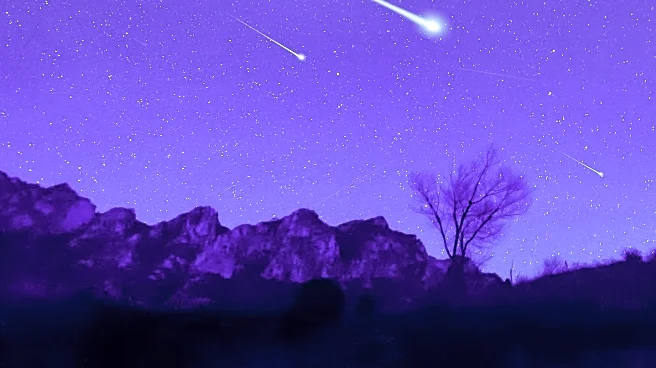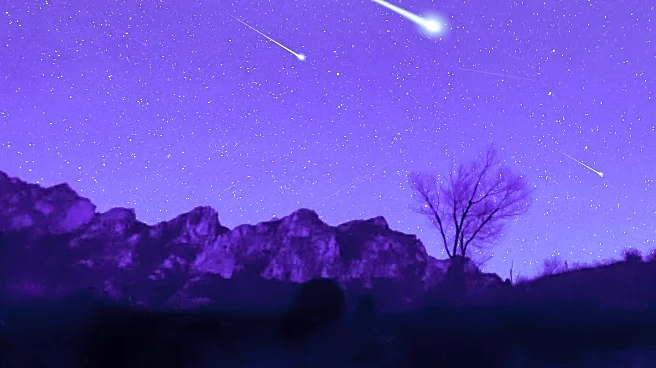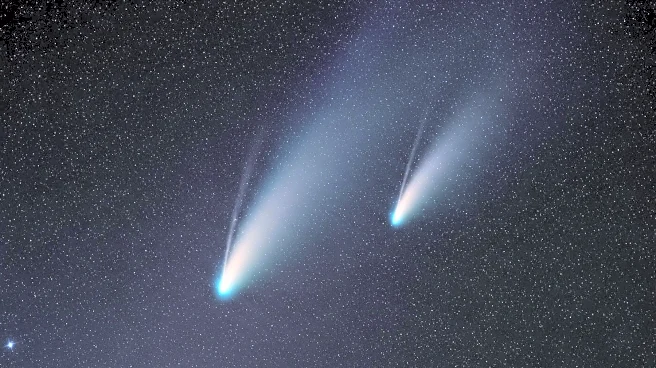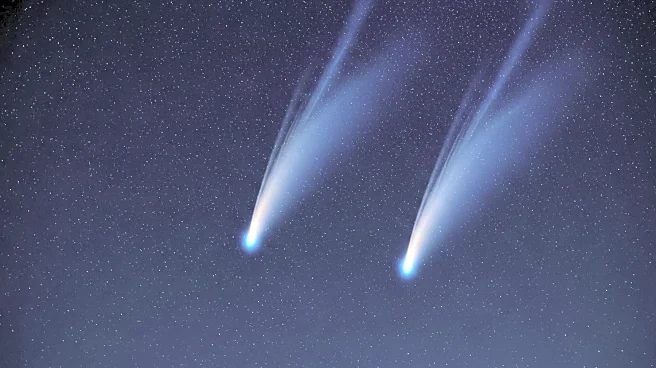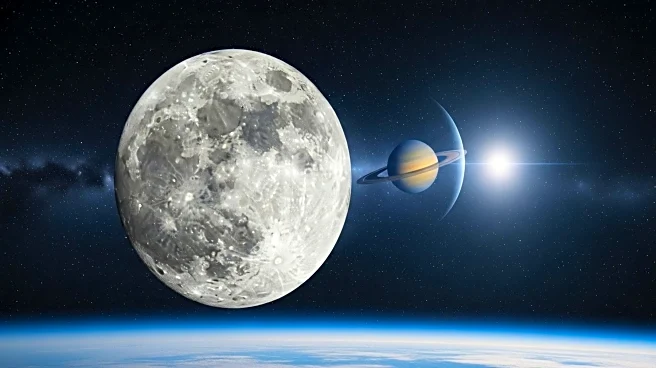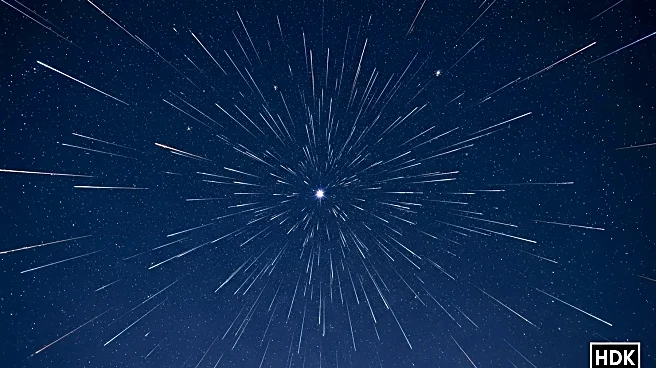What is the story about?
What's Happening?
October 2025 is set to be a remarkable month for skywatchers, with multiple celestial events occurring. The Draconid meteor shower will peak on October 8, although visibility may be hindered by a bright full 'Harvest' supermoon. The Orionid meteor shower, peaking on October 21-22, promises better viewing conditions with a moonless sky, offering up to 20 meteors per hour. Additionally, two comets, Comet C/2025 A6 (Lemmon) and Comet C/2025 R2 (SWAN), will be visible, adding to the celestial spectacle. These comets are expected to be visible with binoculars or even the naked eye under dark skies.
Why It's Important?
These celestial events provide a unique opportunity for both amateur and professional astronomers to observe and study meteor showers and comets. The Orionid meteor shower, in particular, is significant as it originates from debris left by Halley's Comet, offering insights into the comet's composition and behavior. The visibility of two comets simultaneously is a rare occurrence, providing a chance to study their trajectories and characteristics. For the general public, these events offer a chance to engage with astronomy and appreciate the natural wonders of the night sky.
What's Next?
Skywatchers are advised to find dark, rural locations away from city lights for optimal viewing. The Draconid meteor shower is best viewed in the early evening, while the Orionids are best observed after midnight. The comets will be visible throughout October, with Comet Lemmon reaching its closest point to Earth on October 21. Observers are encouraged to use binoculars or telescopes for a better view of the comets. The next significant celestial event will be another supermoon on November 5.
AI Generated Content
Do you find this article useful?
